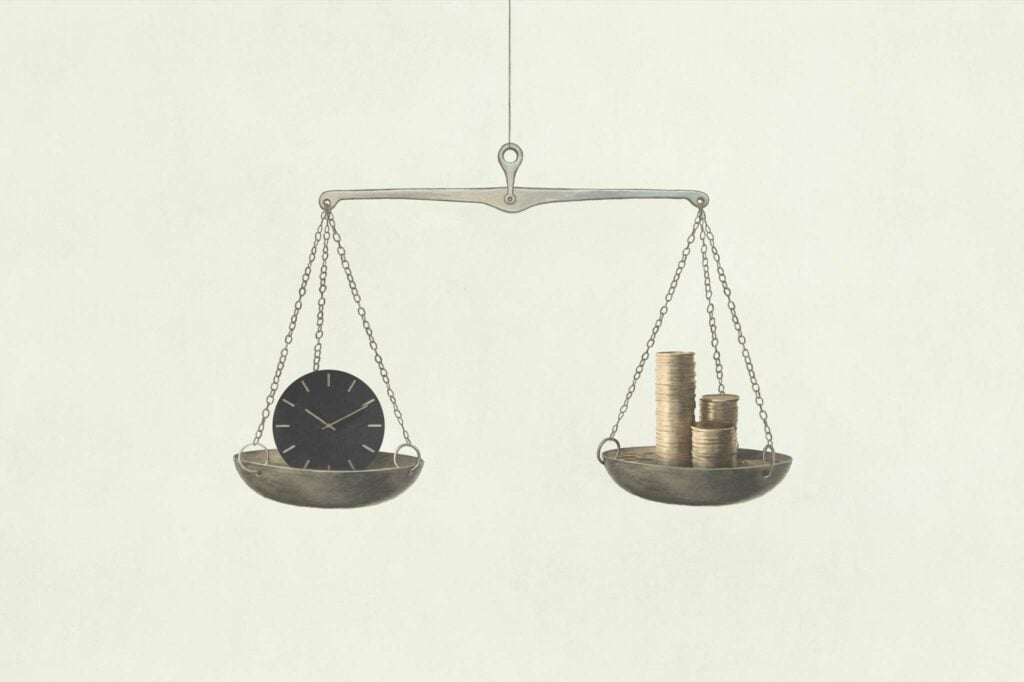Diving deep into the intricacies of patent applications may seem daunting at first glance. Yet, understanding the differences between provisional patent vs non provisional applications is crucial for innovators. This knowledge can be the key to securing your innovative ideas effectively and efficiently. By elucidating these two distinct paths, we aim to provide you with the essential knowledge required to navigate the patent process with confidence. Knowing the difference between these two types of applications is vital because it can influence your patent strategy, the protection of your invention, and ultimately, the success of your innovation in the market.
Why Read This Article?
- Gain a comprehensive understanding of provisional and non-provisional patent applications.
- Learn about the importance of securing an early filing date and how it influences your patent rights.
- Understand the financial implications of patent applications, including cost differences and strategic filing considerations.
- Get insights into patent examination timelines, market testing strategies, and the importance of adequate disclosure in your applications.
- Discover the role of a patent attorney in assisting with provisional applications and navigating non-provisional requirements, maximizing your chances of obtaining a strong, enforceable patent.
- Equip yourself with the knowledge necessary to navigate the patent process with confidence and secure your innovative ideas effectively and efficiently.
Understanding the Basics: Provisional Patent vs Non Provisional Applications
Let’s dive deeper into the world of patent applications. In this section, we explore the unique characteristics of provisional and non-provisional patent applications. They aren’t mutually exclusive, but rather, should work in harmony, each with its own special role. Understanding how these two elements complement each other is essential in your patent journey. So, let’s unravel the mystery together!
Provisional patent applications, frequently the first step in obtaining non-provisional patents, act as a temporary placeholder for your invention. They enable you to lock in an early filing date and attain the desirable “patent pending” status. An early filing date can be a powerful tool for inventors, providing a head start in the race for patent protection. In essence, it’s like calling “dibs” on your innovative idea, giving you the chance to further develop and refine your invention while having the peace of mind that your intellectual property is safeguarded.
The “patent pending” status can also serve as a deterrent for potential competitors, making them think twice before attempting to copy or infringe upon your invention. Therefore, while the provisional patent application might seem like a mere formality, it can play a vital role in your journey to secure a patent and bring your innovative idea to life.
In contrast, non-provisional patent applications:
- constitute the completed, formal application. This means that they are the final, official application that are submitted to the patent office. These applications contain all the necessary details about your invention, including a detailed description, claims, and drawings, if necessary.
- are subject to examination by the United States Patent and Trademark Office (USPTO). The USPTO is the government agency responsible for granting patents. When you submit a non-provisional patent application, it is thoroughly reviewed by a patent examiner. This examination process involves a detailed analysis of your invention and its claims, as well as a search for prior art to ensure that your invention is novel, non-obvious, and patentable.
- could result in the granting of an enforceable patent. If your non-provisional patent application is successful, you will be granted a patent. This patent gives you the exclusive right to make, use, sell, and import your invention in the United States for a certain period of time, typically 20 years from the date of filing. This can help protect your invention from being used or sold by others without your permission.
What is a Provisional Patent Application?
Imagine a provisional patent application as a placeholder, a beacon that marks your claim to a unique invention. It’s like staking a claim to a piece of unexplored territory. This application enables inventors to:
- Establish an early filing date
- Further develop their invention before submitting the more complex non-provisional application
- Provide a broad outline without delving into intricate details
It’s akin to a preliminary sketch of a masterpiece.
However, don’t be fooled by its simplicity. A provisional patent application requires a clear and succinct description of the invention, encompassing the method and procedure for its creation and utilization. It’s like laying the foundation of a building, the strength and clarity of your application can significantly influence the potential success of obtaining a patent.
Remember, a provisional patent application does not undergo examination by the USPTO and expires one year after filing, turning the clock into a silent observer.
What is a Non-Provisional Patent Application?
If a provisional patent application is the foundation, then a non-provisional patent application is the blueprint of the masterpiece. It’s the official submission made to the USPTO that can result in a legally enforceable patent. Think of it as the detailed design, where every feature is carefully outlined, and every detail meticulously stipulated.
This application necessitates the inclusion of:
- A comprehensive description of the invention;
- Its specifications;
- Detailed drawings, if necessary; and
- Claims that delineate the legal scope of the invention for which protection is sought
It’s like a precise map, guiding the patent examiner through the intricate labyrinth of your invention. Once approved, it results in a utility patent, granting exclusive rights to produce, utilize, sell, and import the invention for a specified duration, usually 20 years. The utility patent application is the crucial step in securing these rights, and understanding the process of obtaining utility patents is essential for inventors.
The Filing Date Race: First to File System and Priority Claims
The patent process can sometimes resemble an exciting race against time, where the filing date marks the start. In the world of patents, the first-to-file system reigns supreme, placing immense importance on securing an early filing date. This system is akin to a race where the first one to cross the finish line, or in this case, the first one to file the patent, holds priority in obtaining the patent rights.
Leveraging a provisional patent application can be a game-changing strategy in this race. By enabling inventors to secure a priority date for their invention, a provisional application can function as a head-start in the race, ensuring that their rights are firmly secured. It’s like having an early bird pass in a marathon, giving you a head start over your competitors.
Importance of Securing an Early Filing Date
Securing an early filing date is akin to being the early bird that catches the worm. It plays a crucial role in establishing priority and safeguarding the invention from potential imitation. Think of it as planting a flag on a new discovery, marking your claim to the invention and ensuring your rights from that date forward.
The significance of an early filing date extends beyond protection. It can also influence the expiration date of the patent rights, which is typically set at 20 years from the filing date. It’s like setting the countdown timer, where every tick tock brings you a step closer to the finish line.
Claiming Priority from a Provisional Application
A provisional application can serve as a springboard, propelling inventors towards their goal by allowing them to claim priority. This means that they can use the filing date of their provisional application as the earlier provisional filing date of their non-provisional application, thereby securing an early start in the first-to-file race.
Claiming priority from a provisional application can be compared to a relay race’s baton pass. The provisional application passes on the advantage of an early filing date to the non-provisional application, ensuring that the inventor’s rights are well protected and firmly established.
The Path to Patent Protection: Converting Provisional to Non-Provisional
Moving from a provisional to a non-provisional patent application resembles a metamorphosis, evolving a basic idea into a polished invention. This transformation process is not just about changing the application type; it’s also about enhancing and polishing the invention, ensuring that it stands up to scrutiny and meets all the formal requirements.
The transformation of a provisional patent application into a non-provisional one parallels a butterfly’s development. Just as the caterpillar goes through a transformation inside the cocoon to emerge as a butterfly, the provisional application undergoes a transformation process, emerging as a complete and robust non-provisional application ready for the patent examination process.
Deadline and Conversion Process
The clock starts ticking the moment a provisional patent application is filed. Inventors are required to submit a non-provisional application within one year of filing the provisional application in order to preserve their priority date. It’s like a countdown timer, where every second counts and missing the deadline can have significant consequences.
The conversion process, on the other hand, is not just about meeting deadlines; it’s also about ensuring that the non-provisional application is complete, accurate, and contains sufficient detail to justify the claims made. It’s like preparing for a performance; every detail must be perfect, and nothing can be left to chance.
Ensuring Adequate Disclosure
Providing sufficient disclosure in the provisional application equates to constructing a robust foundation for a building. The strength and stability of the building depend on the quality of the foundation. If the foundation is weak or incomplete, the building (or in this case, the patent) may not stand.
An inadequate disclosure in a provisional patent application can lead to:
- Reduced ability to secure a patent
- Limited backing for subsequently filed claims
- The risk of losing priority
- Possible challenges to validity
It’s like showing up for a battle unprepared; the consequences can be dire and may lead to a loss of rights or even the patent itself.
Financial Considerations: Cost Differences and Strategic Filing
Securing patent protection is not only a challenge of creativity and innovation; it also involves a financial commitment. Understanding the costs associated with provisional and non-provisional patent applications can help inventors make informed decisions and strategically plan their patent journey.
The costs of filing a provisional and non-provisional patent application can be likened to purchasing an insurance policy. The provisional application is akin to a short-term protection plan, offering an affordable way to secure an early filing date and establish an initial claim. However, it’s worth noting that attorney fees for preparing a provisional application can typically range from $2,000 to $10,000 depending on the complexity of the invention and the patent attorney’s fee schedule.
Conversely, the non-provisional application is more like a robust long-term insurance policy, involving a more comprehensive process and higher cost, but offering the potential for long-lasting, enforceable patent rights for up to 20 years. The attorney fees for a non-provisional application are generally higher than for a provisional one, often ranging from $5,000 to $20,000, again depending on the complexity of the invention and the patent attorney’s fee schedule.
Comparison of Filing Fees and Associated Costs
The filing fees for a provisional patent application are generally lower than those for non-provisional applications. This makes provisional applications a cost-effective initial step for inventors at the beginning of their patent journey. You can check the current fee schedule on the USPTO website here.
Non-provisional applications, however, come with higher filing fees. These applications are the final, official submissions to the patent office and can lead to an enforceable patent. The costs for non-provisional applications can vary and may include additional expenses for examination, issue, and maintenance fees.
Strategic Delay of Examination Costs
Filing a provisional patent application can provide a cost-saving temporary solution. It can also be a tactical move to delay examination costs. This allows inventors to buy some time to further develop and assess their invention’s potential before committing to the higher costs associated with a non-provisional application.
The deferment of examination costs is like having a grace period on a loan. It provides inventors with a breather, allowing them to refine their invention, assess the market, and secure funding before the examination costs kick in.
Legal Nuances: Role of a Patent Attorney in Application Filings
A patent attorney’s involvement can significantly increase the chances of success in the patent process. For example, when considering micro entity applicants, the success rate for those filing on their own stands at 32%. However, when these applicants engage the services of a patent professional, their success rate jumps to 50%. This represents a noteworthy increase of 18%, illustrating the substantial advantage of utilizing a patent attorney’s expertise in the filing process. Source
Assistance with Provisional Applications
When drafting a provisional patent application, a patent attorney can provide invaluable assistance. They help in creating the application with precision, ensuring it contains sufficient detail to support the claims made, and securing an early filing date. Beyond drafting the application, a patent attorney also provides strategic advice, ensuring that the application supports the inventor’s long-term goals. An attorney can also help you assess whether a provisional or a non-provisional patent application is the best fit for your unique situation. For more information, we offer a free consultation which you can schedule here: Contact Us
Navigating Non-Provisional Patent Application Requirements
Navigating the detailed requirements of a non-provisional patent application can be challenging. Without the right guidance, it can be easy to make mistakes that lead to a rejected application. This is where the expertise of a patent attorney becomes indispensable.
A patent attorney can provide the necessary expertise and assistance to navigate through the complex labyrinth of non-provisional patent applications. They are equipped with the knowledge and experience to ensure all legal and technical requirements are met. They meticulously review your application to ensure it is free of errors, and that the claims made are well-defined, robust, and capable of withstanding scrutiny during the examination process.
Furthermore, a patent attorney can guide you in drafting a comprehensive description of your invention, preparing detailed drawings, and formulating precise claims that delineate the legal scope of the invention for which protection is sought. Their role extends beyond the preparation of the application. They can also provide strategic advice on patentability, infringement, validity and enforcement issues, and can represent you in proceedings before the USPTO.
In essence, a patent attorney acts as your guide, helping you navigate the complex process of non-provisional patent applications, and aiming to make your journey towards securing a patent as smooth as possible.
Timelines and Tactics: Patent Examination Timelines and Market Testing
The patent examination timeline is a critical aspect to consider when filing your non-provisional patent application. This timeline begins the moment you file your non-provisional patent application and ends when your patent is granted.
However, the duration of this timeline can vary. Factors such as the complexity of the invention and the current backlog at the patent office can extend the patent examination phase. On average, it takes about 24 to 36 months for a non-provisional patent application to be processed by the USPTO. Being aware of this average duration and potential delays can help you effectively plan your patent journey and strategize accordingly.
The patent examination timeline is not just a measure of time, but also a reflection of the thoroughness of the patent examination process. The process involves a detailed review of your application by a patent examiner, who will assess the novelty, non-obviousness, and patentability of your invention. This comprehensive examination ensures that only truly novel and non-obvious inventions are granted patent protection.
Moreover, the timeline can also influence your patent strategy. For instance, if you are seeking rapid market entry, you may want to consider the Track One Prioritized Examination Program, which expedites the examination process to about six months. However, this comes with a higher filing fee. On the other hand, if you are not in a hurry and want to save on costs, you may opt for the regular examination process.
Understanding the patent examination timeline is crucial for managing expectations, planning your market entry, and aligning your patent strategy with your business goals.
Market Testing During the Provisional Period
During the provisional patent application period, inventors can conduct market testing. This provides an opportunity to test the invention in the market, gather feedback, and make necessary adjustments before submitting a non-provisional application.
This provisional period is a strategic window for inventors to refine their invention, identify potential issues, and adjust their strategy based on actual market feedback. It’s an opportunity to test the invention’s viability in real-world conditions and understand the market’s response.
Furthermore, this time can be used to explore potential partnerships or licensing opportunities, enhancing the value and reach of your invention. It’s a proactive phase that, when utilized effectively, can greatly contribute to the success of the final patent application and the commercial success of the invention.
Additionally, by conducting market testing during the provisional period, inventors can potentially identify and address any patent infringement issues early on. In essence, the provisional period is not just a placeholder for the patent application process, but a valuable phase in its own right that, when utilized effectively, can greatly contribute to the success of the final patent application and the commercial success of the invention.
Summary
In the end, navigating the patent maze boils down to understanding the differences between provisional and non-provisional patent applications, appreciating the importance of an early filing date, and strategically planning your patent journey. Whether you’re at the starting line, readying your provisional application, or at the finish line, awaiting the grant of your non-provisional patent application, remember that every step you take is a stride towards protecting your innovative ideas and securing your place in the world of inventions.
In this complex journey, being armed with the right knowledge can make a world of difference. Knowing the nuances of both provisional and non-provisional patent applications, their unique purposes, and how they can serve your innovation goals can be a game-changer. It’s like having a roadmap in a labyrinth, guiding you towards your patent goals.
The importance of securing an early filing date cannot be overstated. It’s your first line of defense against potential imitators and a critical factor in determining the lifespan of your patent rights. It’s like being the first to stake a claim in a gold rush, securing your spot and ensuring your rights from that point forward.
Strategically planning your patent journey is akin to a chess game. Every move you make, from filing a provisional application to transitioning to a non-provisional application, to navigating the examination process, should be calculated and deliberate, keeping the end goal of securing your patent in sight.
Whether you are at the beginning of your patent journey, preparing your provisional application, or at the end, eagerly awaiting the grant of your non-provisional patent application, remember that each step is a significant stride towards protecting your innovative ideas. Each action you take, each decision you make, brings you one step closer to securing your rightful place in the world of inventions.
Frequently Asked Questions
What is the key difference between a non-provisional patent application and a provisional patent application?
A non-provisional patent application is the formal application to be reviewed by the USPTO, whereas a provisional patent application does not get examined, but can secure an earlier filing date.
What are the benefits of a provisional patent?
Provisional patent applications provide an effective way to gain protection for an invention on a tight budget. They enable an inventor to get an official filing date quickly and allow them to test and perfect their concept before filing a full patent.
What qualifies for a provisional patent?
A provisional patent application must include a detailed description of the invention that meets USPTO requirements. The description should be clear, concise, and complete to the extent that it allows any person skilled in the art to make and use the invention without undue experimentation. The USPTO guidelines require that the application describe the invention in such full, clear, concise, and exact terms as to enable any person skilled in the art or science to which the invention pertains to make and use the same. In essence, a well-drafted provisional patent application forms a solid foundation for a subsequent non-provisional application and helps to establish an early effective filing date.
What is the importance of securing an early filing date in a patent application?
Securing an early filing date is crucial in the competitive race for patent protection, particularly due to the first-to-file system that governs patent rights. Being the first to file can give you a significant edge, marking your territory in the innovation landscape, and protecting your invention from potential imitators. Additionally, the filing date sets the clock for the patent’s lifespan, typically 20 years from the date of filing, making it a vital milestone in your patent journey.
What is the role of a patent attorney in the patent application process?
A patent attorney is crucial in the patent application process. They assist in drafting the application, ensure it meets legal and technical requirements, and provide strategic advice. They guide inventors through the patent examination process, help respond to objections from the patent office, and advise on potential infringement issues. They also assess the patentability of an invention and recommend the best patent strategy considering the inventor’s business goals.
Next Action Steps For Protecting Your Intellectual Property
In conclusion, navigating the world of patents can be complex and challenging, but you don’t have to do it alone. The Rapacke Law Group is here to guide you every step of the way. From provisional to non-provisional applications, from filing to examination, we’re committed to providing you with the knowledge, expertise, and guidance you need to protect your innovative ideas. Ready to take the first step in your patent journey? Book a free patent strategy call with us today at The Rapacke Law Group.




